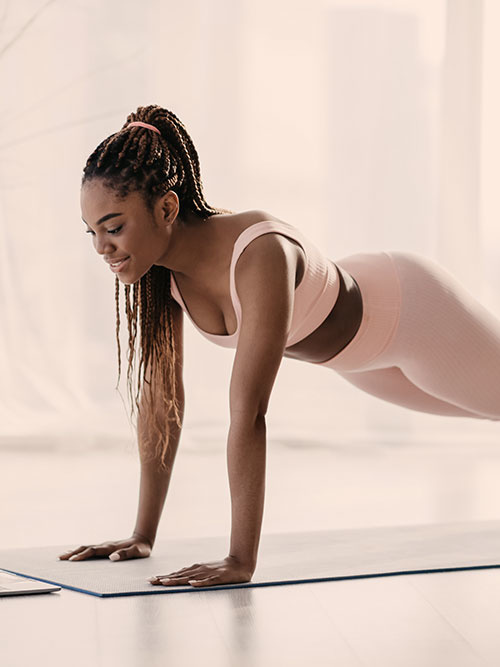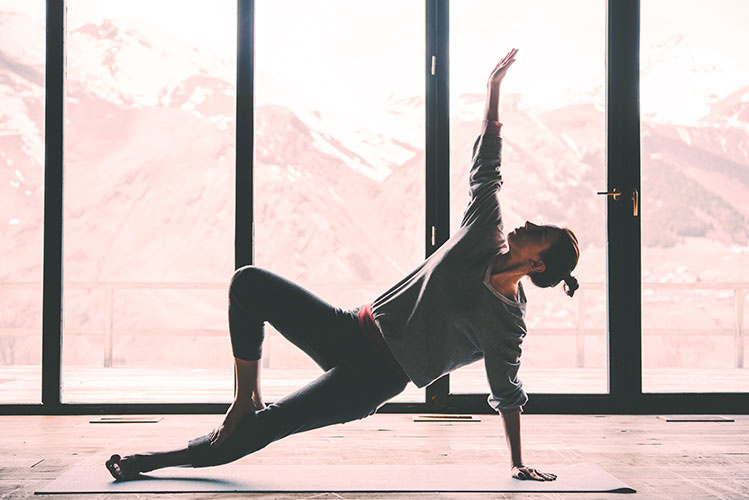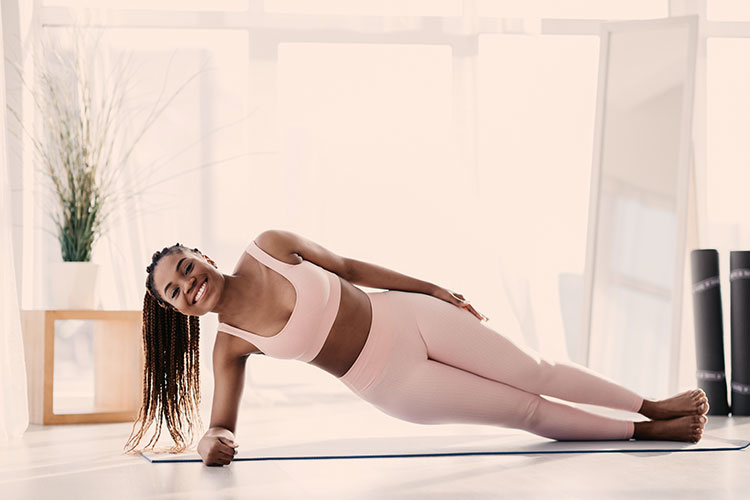Ready for the yoga plank pose? Strengthen your core
Who remembers when planking was all the rage on the internet? It must have been almost ten years since you saw people 'planking' in the strangest places on YouTube videos. With a stiff body balancing on mailboxes, suitcases, between table and couch, on a basketball net.
Not that I want to revive this craze but I would like to talk about the plank. It may look easy, lying as straight as a plank on a barstool, but it takes some pretty strong back and abs, aka a strong core.
Within yoga there are no less than four asanas called the plank. Curious about what practicing the plank can give you, how best to perform it and what different yoga asanas there are that are based on the plank? Read more about this versatile and comprehensive yoga pose below.
Advantages of planking
The apparently passive posture trains almost all your muscles and especially strengthens your core, the muscles in your stomach and back and your shoulders, your arms and wrists.
By regularly 'doing' the plank you improve your posture, because the muscles around your spine are addressed. Mentally it strengthens your stamina and willpower.
Didn't think that of such a simple plank, right?

What is the plank exercise good for?
The plank does wonders for your posture! Do the plank every day (see below for the best way to perform the asana) and notice in the mirror how it visibly improves your posture. You stand upright and prevent back problems. That makes it a good exercise for teenagers shooting in the air, get rid of those droopy shoulders.
How long should you plank?
In the sports world, 60 seconds, one minute, is generally seen as the ideal length of one plank. After that minute, take a break (or do another asana) and repeat the plank one more time, then another pause or another asana, and the plank one more time.
Don't be blinded by those 60 seconds, shorter is also effective! Even if you only last 10 seconds, your body will become stronger anyway. Try to do the pose three times, however short or how long you want or can last.
Yoga plank pose
The Plank is a basic posture in yoga. The asana is part of the well-practiced and well-known sequence of the Sun Salutations, a series of asanas that you traditionally perform at sunrise. I will write another blog about that later this year. You can see this pose as a warm-up, it puts almost all your muscles to work.
When you talk about the plank in the yoga world, it can be about four different asanas. You have the High Plank, or Phalakasana (or Kumbhakasana), the Low Plank, Chaturanga Dandasana, the Side Plank, Vasisthasana and the Upward Plank, Purvottanasana. Within these asanas there are again countless amounts of variations.

How do you properly perform the plank?
The most important thing to pay attention to is that in the plank position your head, shoulders, back, buttocks and legs form a straight line. So don't sag in your back (hollow back) or keep your buttocks up too far.
Tip: look at yourself in a mirror, sometimes you think your body forms a straight line, but the reality is a bit different.
High Plank step-by-step
To get into the High Plank during yoga, start in the Standing Forward Bend (Uttanasana).
- Exhale, bend your knees and step or jump back.
- Keep your legs active and tense.
- Don't sink your hips to the floor, but don't keep your buttocks too high either.
- Try to make your body as long and sturdy as a plank. Your body is one straight line from your feet to your shoulders.
- Stretch away from your heels toward the crown of your head.
- Stay in this position for as long as it feels good, 30 seconds, 1 minute, and breathe.
- Or come directly into the Low Plank (here you bend your elbows, moving forward as you lower yourself to 10 centimeters above the ground. Your elbows are at right angles and you hold them against your sides).
Pitfalls in the execution of the plank
If you suffer from sensitive or weak wrists, you should be careful with this posture. Then choose the variation where you lean on your forearms. A shoulder injury can also be a contraindication. Pay close attention to your body, don't force it.
If you're not yet strong enough in your core, you can always do all Plank variations with your knees on the floor. Make sure to keep a straight line in this variation as well, in this case from knees to shoulders (not your buttocks up or down!).

Fancy some variation?
A plank is just a plank. Fancy an extra challenge? Then try lifting one leg while standing in the pose. Alternate both legs.
Side Plank
Or do the Side Plank for once;
- Start from the 'regular' Plank.
- Transfer your weight to your right arm and rotate your body so that your left shoulder is above your right shoulder.
- Put your left hand on your side, your left foot on your right foot, both feet flexed.
- You keep your legs active.
- Now stretch your left arm up. Look at your left hand.
- Stay in the pose for as long as feels comfortable for you.
- Come back to the regular Plank and switch sides.
Place to plank
And if even with these variations you get into a rut, you can always try planking on your trash can. Even if you are ten years too late to join the craze. Ah. Maybe too late but a strong core.
Do you want to read more about yoga postures? Check out our blog about Asanas!








